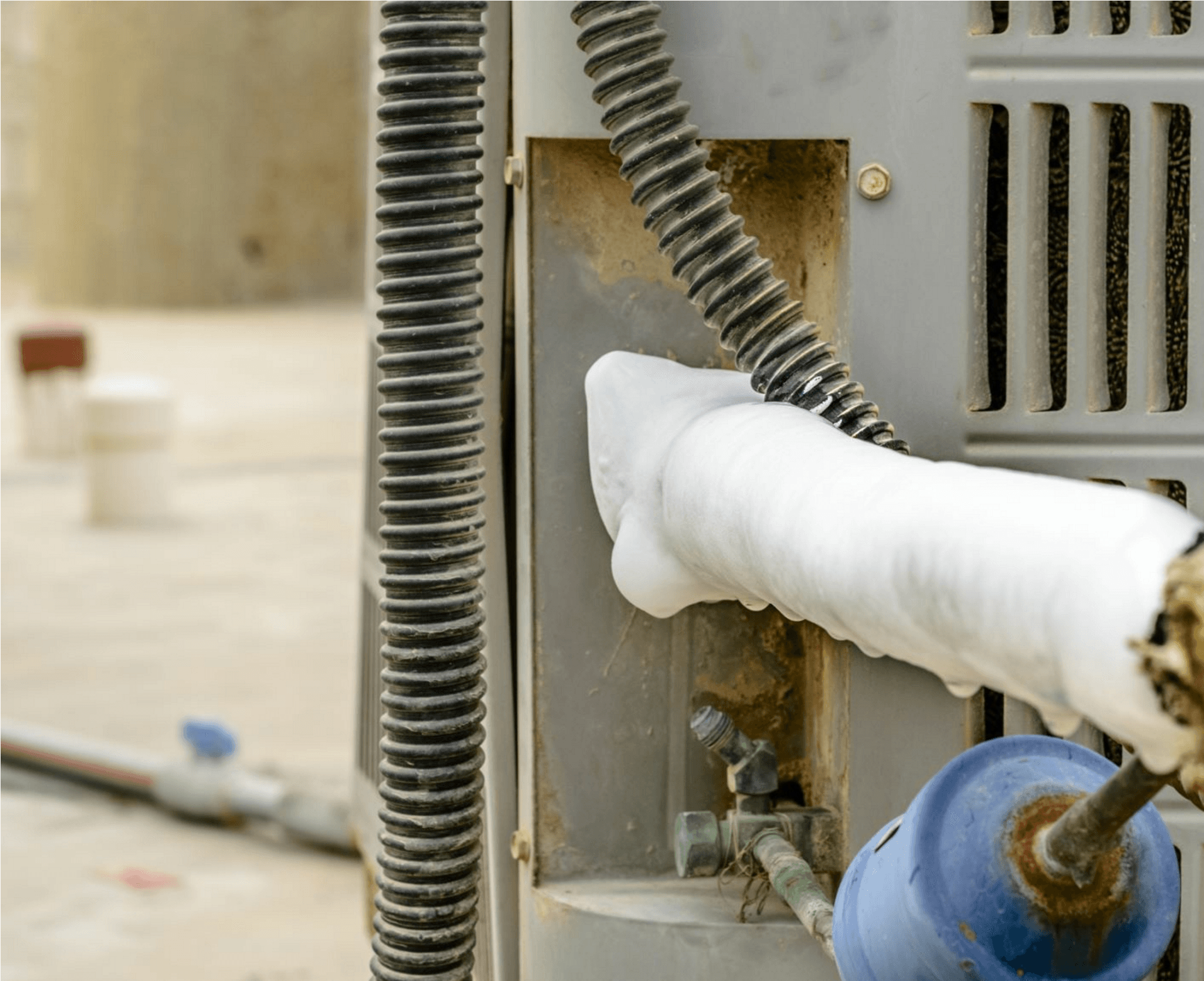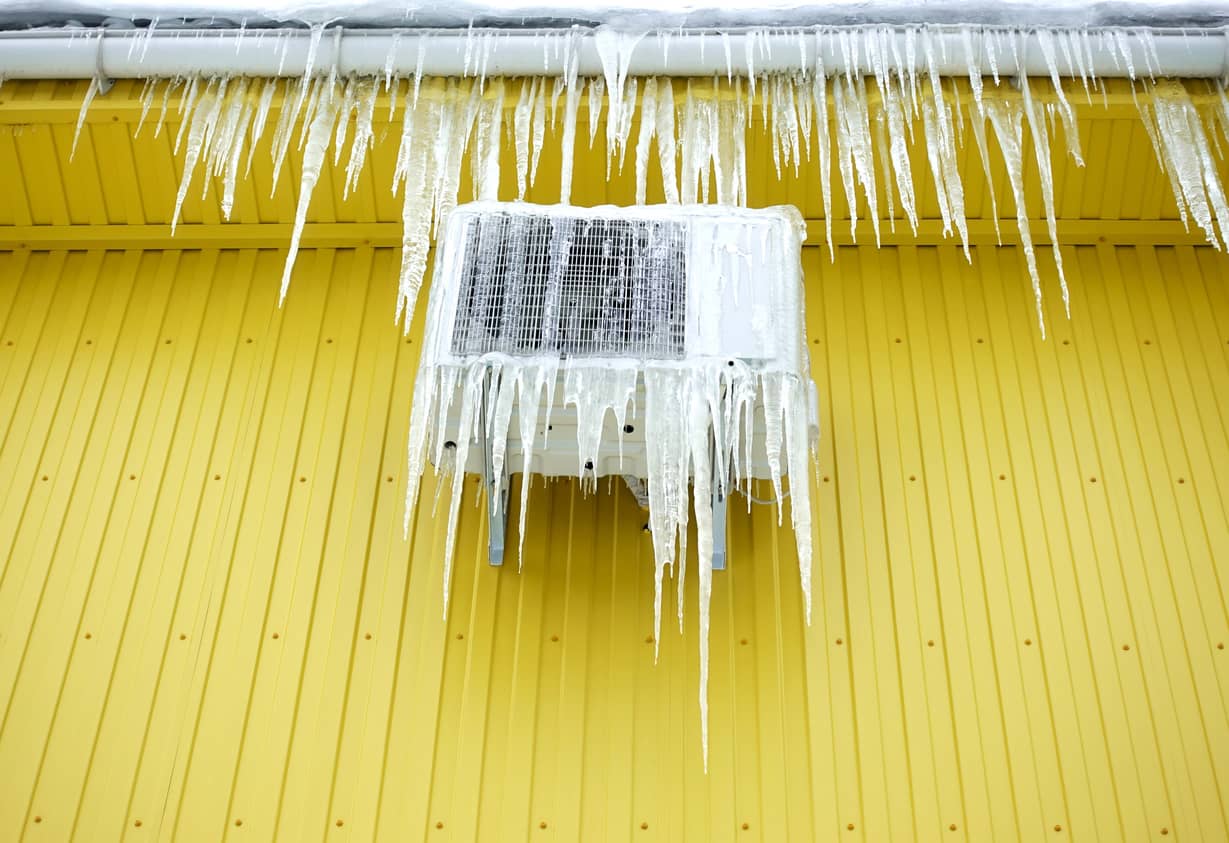Presented here in the next paragraph you can discover some excellent information and facts pertaining to What Do I Do If My AC Pipe Is Frozen.

Introduction
Discovering that your air conditioner pipeline is frozen can be worrying, particularly during warm summer months when you rely upon your ac unit one of the most. Comprehending what to do in such a scenario is important to stop further damages to your cooling system and ensure your convenience inside your home.
Recognizing the Causes
Several aspects can add to the freezing of an a/c pipeline. Recognizing these causes can aid you resolve the issue successfully.
Absence of Airflow
One usual source of an icy AC pipe is inadequate air flow. When the air flow over the evaporator coil is limited, it can trigger the coil to drop below freezing temperature, resulting in ice formation on the pipeline.
Reduced Refrigerant Levels
Inadequate cooling agent levels in your AC system can likewise result in an icy pipe. Low cooling agent levels can create the stress in the system to go down, leading to the freezing of dampness on the evaporator coil.
Winter Conditions
In cooler climates, freezing temperatures outside can add to the cold of air conditioning pipelines. If your a/c system is not properly insulated or if there are leakages in the ductwork, cold air can penetrate the system, creating the pipeline to freeze.
Dirty Air Filters
Filthy or clogged air filters can limit airflow in your a/c system, leading to different concerns, including a frozen pipe. It's important to change or clean your air filters routinely to guarantee appropriate air movement and protect against ice buildup.
Signs of a Frozen Air Conditioning Pipe
Identifying the indicators of an icy air conditioner pipeline is critical for punctual activity.
Lowered Airflow
If you notice a substantial reduction in air movement from your vents, it might indicate a frozen pipeline.
Ice Buildup on the Pipe
Noticeable ice build-up on the cooling agent line or the evaporator coil is a clear sign of an icy AC pipeline.
Odd Sounds from the Unit
Unusual audios, such as hissing or gurgling, coming from your AC system can indicate that there's ice existing on the pipe.
Immediate Actions to Take
When confronted with an icy a/c pipe, it's necessary to act quickly to prevent additional damages to your air conditioning system.
Switching off the air conditioner
The primary step is to turn off your air conditioning unit to avoid the system from running and aggravating the problem.
Looking for Blockages
Evaluate the location around the interior device for any kind of obstructions that might be obstructing airflow, such as furniture or curtains.
Thawing the Pipe
You can utilize mild techniques like putting towels soaked in warm water around the frozen pipeline to aid thaw it gradually.
Preventive Measures
Taking preventive measures can aid avoid future incidents of a frozen a/c pipe.
Normal Maintenance Checks
Arrange regular maintenance consult a professional HVAC technician to ensure that your a/c system is running efficiently.
Transforming Air Filters
Routinely change or clean your air filters to stop airflow limitations and maintain ideal efficiency.
Insulating Exposed Pipes
If your a/c pipelines are revealed to cold temperature levels, consider protecting them to stop cold during winter season.
Looking For Professional Help
If DIY techniques stop working to settle the issue or if you're uncertain regarding exactly how to proceed, it's finest to look for assistance from a qualified HVAC technician.
When DIY Methods Fail
If your attempts to thaw the pipeline or address various other concerns are not successful, it's time to employ a specialist.
Value of Hiring a Professional HVAC Technician
A certified HVAC professional has the knowledge and tools necessary to identify and repair concerns with your AC system securely and efficiently.
Final thought
Handling a frozen air conditioning pipe can be an aggravating experience, but recognizing how to respond can aid lessen damage and recover comfort to your home. By understanding the causes, acknowledging the signs, and taking timely activity, you can properly deal with the concern and prevent future incidents.
What to Do If Your AC Line Is Frozen
Make Sure All Supply and Return Air Vents Are Open
If you notice problems with airflow, the first thing you should do is check your supply and return vents. Supply vents distribute clean, conditioned air throughout your home. As this air becomes stale, it’s pulled into the return vent, where it’s reconditioned before being sent back out through the supply vent.
When these vents are closed, air won’t flow in the home. Before examining your AC, check the vents in every room and ensure they’re all open.
Check for a Dirty Air Filter
Another possible cause of limited airflow is a dirty air filter. Your air conditioner’s filters catch elements you don’t want to breathe in, such as dirt and dust. Over time, filters can become clogged, ultimately blocking air from flowing in and out. The lack of airflow can then cause the entire coil to freeze and will completely restrict any air from moving through it. The AC may need to be powered off for one to two days to allow the coil to thaw after replacing the filter to allow proper functioning of the unit. This debris can also accumulate on your AC’s evaporator coil, requiring a more serious repair. In general, air filters should be cleaned regularly (about every two weeks).
Assess Your Outdoor Unit
In addition to checking your AC, assessing the outdoor unit is a good idea. Also known as the condensing unit, it works with your interior unit to release heat outside. An issue with the outdoor unit can result in rising internal temperatures.
Overgrown Shrubs or Clogged Leaves
From leaves and twigs to shrubs and debris, there’s no shortage of outdoor elements that can accumulate around your condensing unit. When these elements get lodged inside the unit, they can block airflow. Fortunately, removing the blockage can solve the problem.
Sounds of a Broken Fan
Shrubs and leaves aren’t the only things that can impede your outdoor unit’s airflow. If the fan is broken, the unit won’t be able to properly get rid of heat — which means the internal temperature won’t go down. First, make sure the fan is spinning. If it is, check for the following sounds of a broken fan:
Buzzing Rattling Screeching Hissing Clicking Preventative Measures
Nobody wants to deal with a frozen AC line. In addition to causing problems with your air conditioner, they require professional repairs. On the bright side, there are preventative measures you can take to help ensure this issue doesn’t arise in the first place.
https://www.coopergreenteam.com/blog/what-to-do-if-ac-line-frozen

I was made aware of that editorial about Why Is Ice On My Outside Air Conditione from an acquaintance on another web blog. Enjoyed our piece of writing? Please share it. Let other people find it. I truly appreciate reading our article about Why Is Ice On My Outside Air Conditione.
Request A Quote